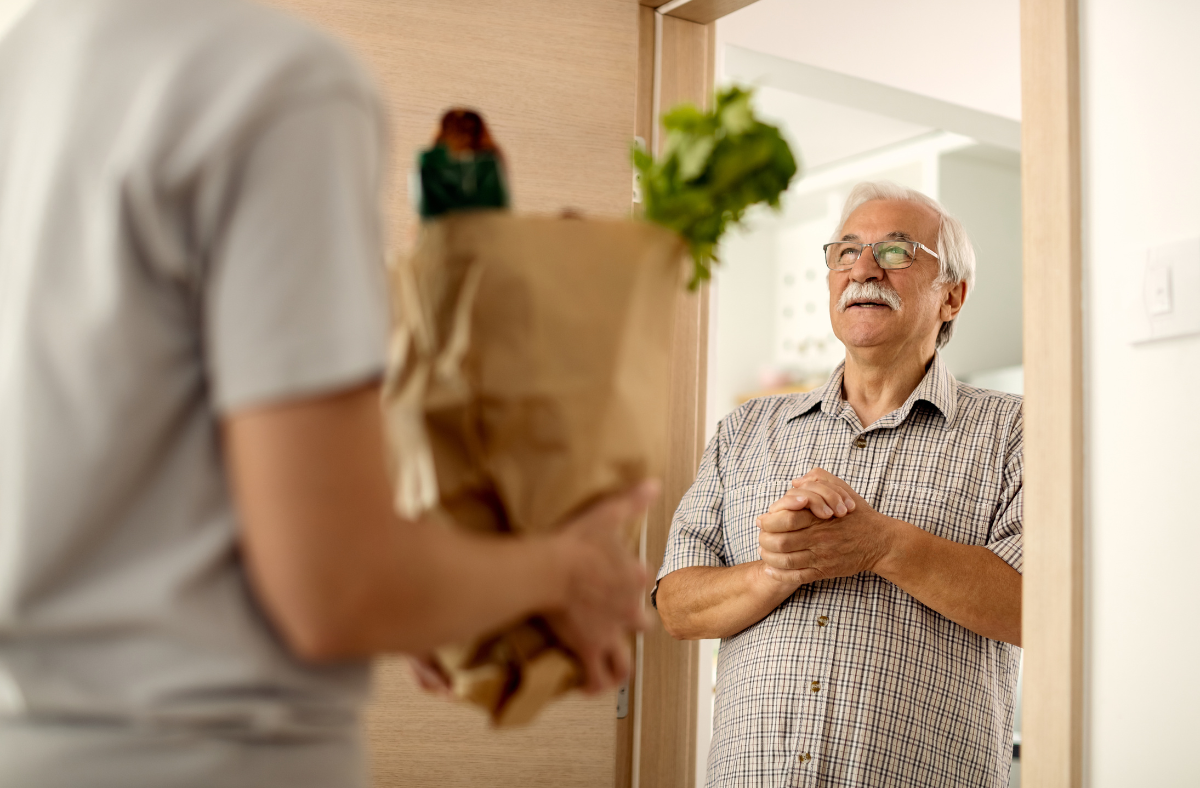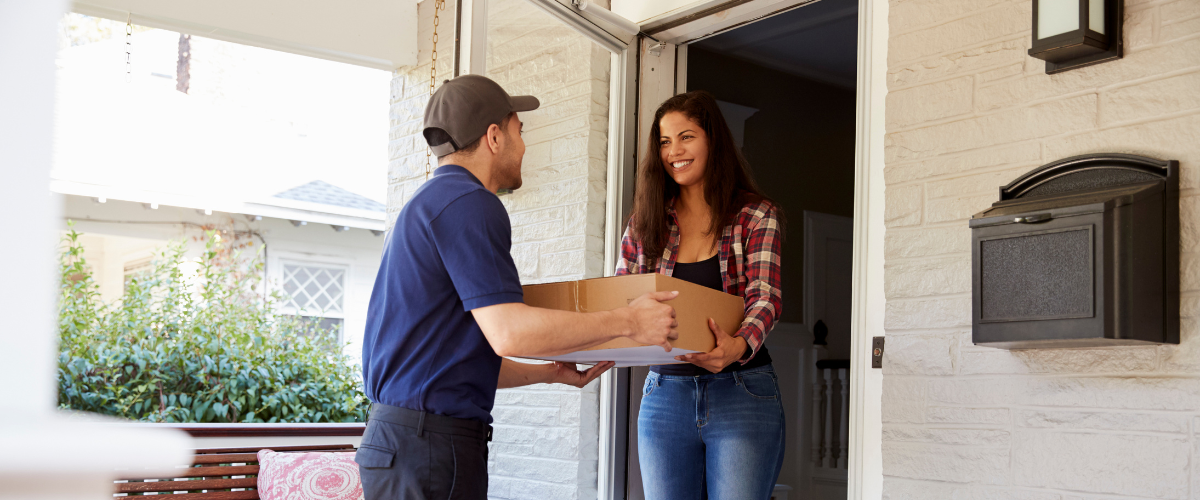“They just put the package on the porch and left, without even ringing the doorbell. It was hours before I checked my email and learned my order was waiting outside.” –Amazon customer
“I missed a meal because they insisted that someone come to the door and okay the delivery in person. I was home alone and couldn’t get out of bed.” –Person with recently incurred disability
Usually, home delivery is a blessing to those who can’t get out easily. Sometimes, though, it brings its own concerns. Especially if you’re mobility-impaired, hard of hearing, or nonverbal/autistic—and may be home alone when the delivery arrives.

Here are our top five tips for helping things go smoothly.
1. Use accessibility features to place delivery orders.
Your own smartphone/tablet/computer has accessibility settings (watch our Did You Know video series to learn about these). So do many shopping apps and websites: check their options even if you don’t think you’ll need them. A developer who takes time to make accessible apps is also likely to emphasize inclusive delivery options.
2. Before ordering for the first time, know what to expect.
Official delivery policies should be on the company website. Things to check:
- How notifications/updates are sent, and how to sign up.
- How to track orders digitally, especially if you want someone home when the package arrives. (Note that with long-distance deliveries, some things come days earlier than originally estimated. Watch those updates!)
- Whether the delivery person will ring the bell, or send a text or email, when leaving the package.
- If someone will need to sign for deliveries (especially if you plan to order expensive goods, complicated equipment, or anything that contains chemicals).
- Anything specific on accommodations or inclusive delivery. (Even everyday mail from the U.S. Postal Service has an accommodation policy: check their Door Delivery page.)
3. Whenever possible, clarify specific accommodations in advance.
Things go smoother when delivery people are prepared to help get a heavy package inside, communicate through AAC technology, or otherwise accommodate customer needs. If the order form doesn’t already have a space for such requests, send them via the website’s customer-contact page.
4. Know what to do if there’s a problem.
Despite advance planning, you may occasionally get a delivery person who insists you do things the “typical” way. Stay firm but polite: putting others on the defensive only makes things worse. You can always submit a complaint if someone is seriously obstinate, rude, or condescending. However, try not to be the difficult customer who expects everyone to immediately understand everything at first glance.
5. Use assistive technology to help you receive deliveries.
If you have a disability and spend much time home alone, you may already know the advantages of smart-home technology. Don’t hesitate to use the following when receiving deliveries:
- Outdoor cameras and speakers (or text/caption screens) for getting “visitor” alerts when someone leaves a package, or for talking with delivery people from inside
- Smart screens for using cameras/speakers from any room in your home
- (If you have a regular delivery person or service you trust) Smart locks for letting people bring deliveries through the gate, or even into the house
Someday soon, you may also have a household robot to fetch packages from the porch. Maybe it’ll even put the groceries away!

